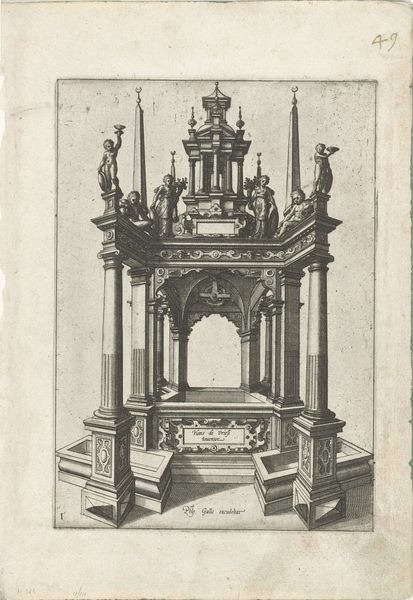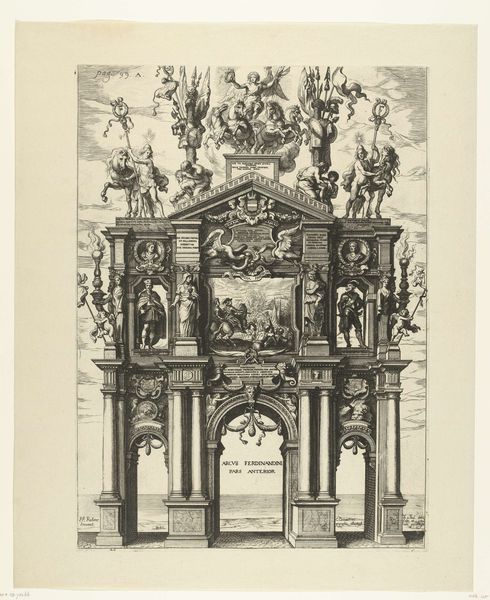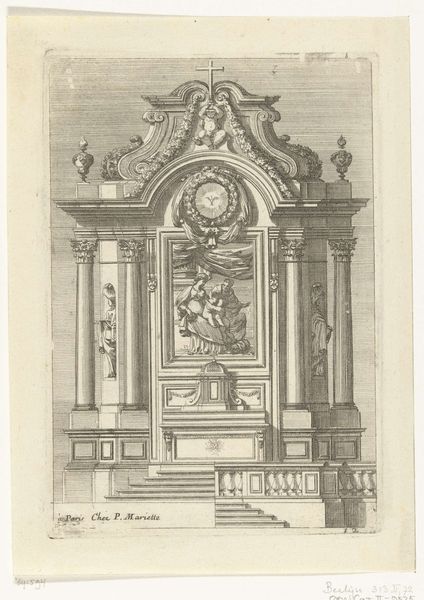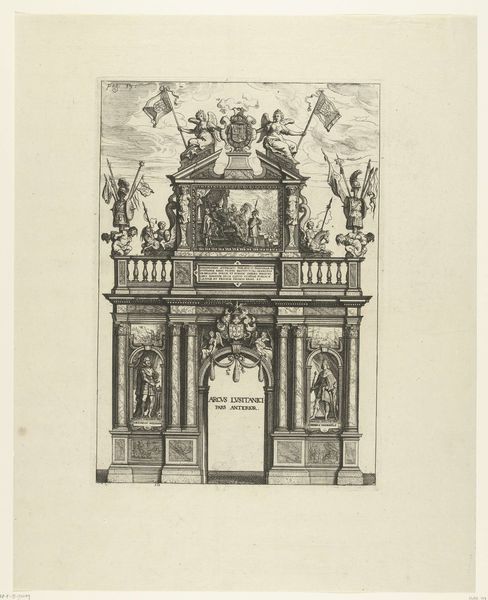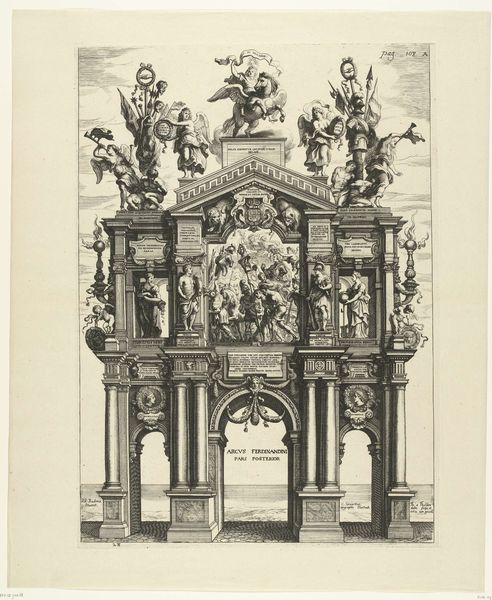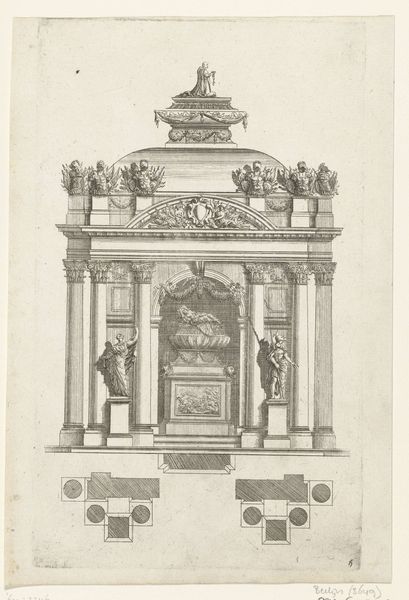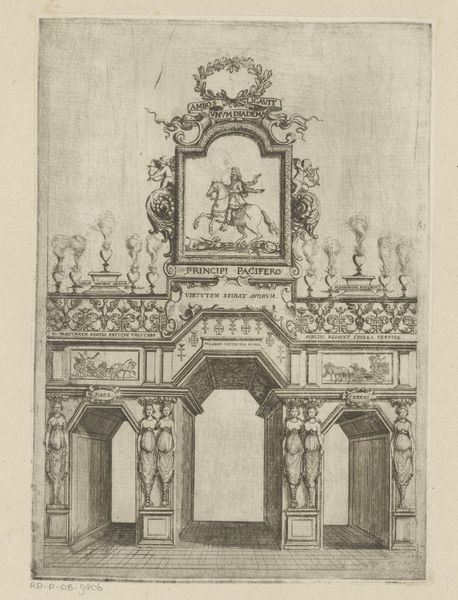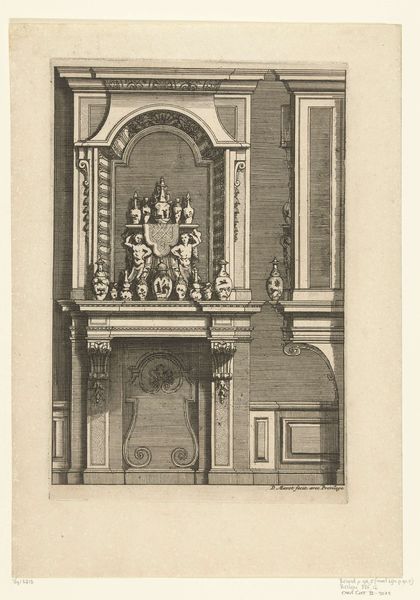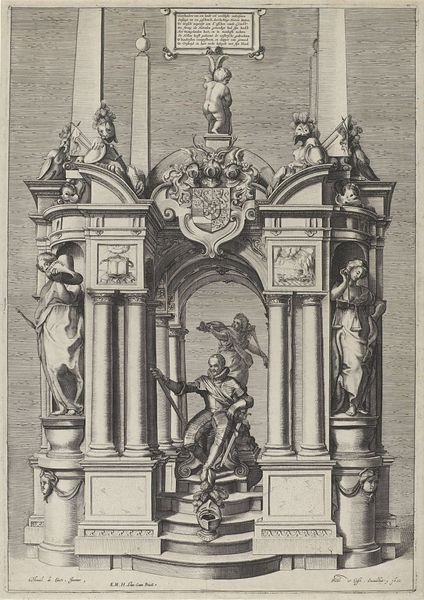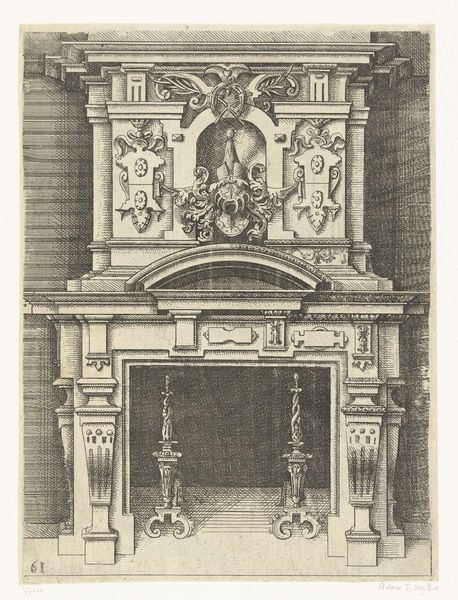
print, engraving, architecture
#
architectural sketch
#
medieval
# print
#
form
#
line
#
history-painting
#
engraving
#
architecture
Dimensions: height 296 mm, width 230 mm
Copyright: Rijks Museum: Open Domain
This print, Graftombe van Willem I, prins van Oranje, was made in 1623 by an anonymous artist, using an engraving technique. Engraving is an intaglio process, where the design is cut into a metal plate, traditionally copper, using a tool called a burin. The incised lines hold ink, and when pressed against paper, the image is transferred. The precision required means a high degree of skill and apprenticeship. Look at the level of detail achieved here, in the depiction of William I’s tomb! The material qualities inherent in this method – the fineness of line, the capacity for intricate detail – have profoundly influenced the image's aesthetic. The social significance of this print lies in its ability to disseminate a message, shaping perceptions of political figures and their legacies through the medium of mass production, and a carefully crafted image. Ultimately, understanding this print means acknowledging the hand skills and labor involved, in an aesthetic hierarchy where craft and fine art were artificially divided.
Comments
No comments
Be the first to comment and join the conversation on the ultimate creative platform.


